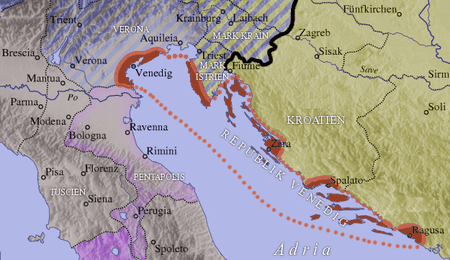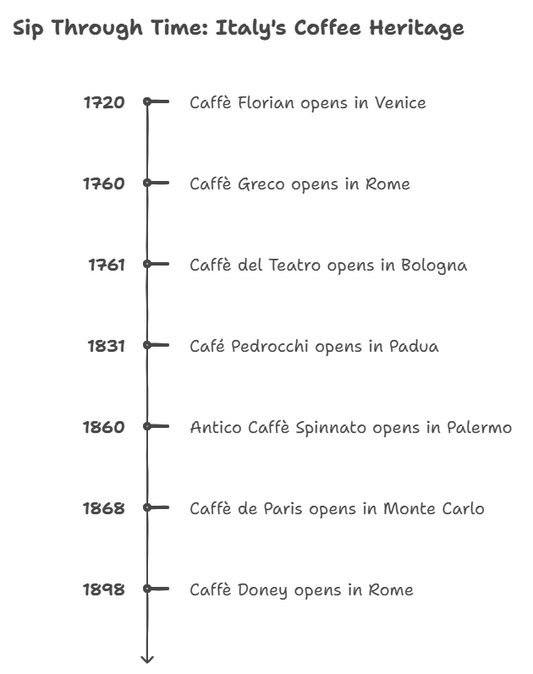A legacy isn’t made in a few years or decades. To have a history that is as rich as the tradition and culture it carries, it takes millenniums or sometimes even more than that. And all those long-held secrets tempt us to dig deep into the layers to see the magic unfold just the way it was once created. All this fits perfectly well when we think about Venice.
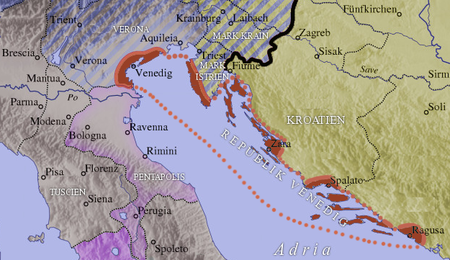
Every nook has a story to tell and you’ll see its rich culture as far as you see. So, let’s unmask some hidden secrets of this ‘City of Masks’.
Venice: The days when it wasn’t known as ‘Venice’
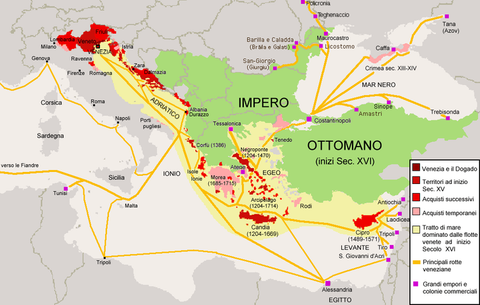
‘La Serenissima’, as it was known then, was founded in 421 AD and inhabited by the refugees who fled from German colonies in search of safe living. With lagoons all around them, they created a city in waters that turned out to be more beautiful than many created on lands. Such a marvelous construction had to take birth from genius minds that Venetians surely have. They stabilized the islands by sinking oak piles in the mud and built barriers against the sea to protect their constructions. For years, they survived on salt and glass trade as lagoons offered them these things alone. With no scope of agriculture, they lived on fish for their survival. Life was hard for these refugees but they fought it together and created a unique society.
Venice’s character: Mesmerizing Architectural Wonders
A city, originally just a group of lagoons, got its character and charm with each monument. Brick by brick, all of them made it a city with a history so rich that draws millions, simply to unleash the secrets hidden behind those ancient walls. Opening up those doors helps us all to witness the past of Venice a little.
St. Mark’s Basilica
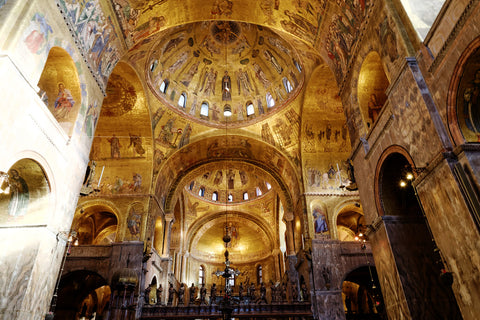
The Basilica di San Marco is built in the year 828 and considered a hallmark of Byzantine architecture. The 8000 square meters of walls and ceilings covered with gilded mosaic have been adorned with the stories of the New as well as the Old Testament and The Last Judgement. Originally built to store the stolen relics of St. Mark, the church was burned down thrice in 976, 1063, and 1094 during an uprising. Byzantine architects were hired to renovate the church and a major part of the church is protected with glass now.
Doge’s Palace
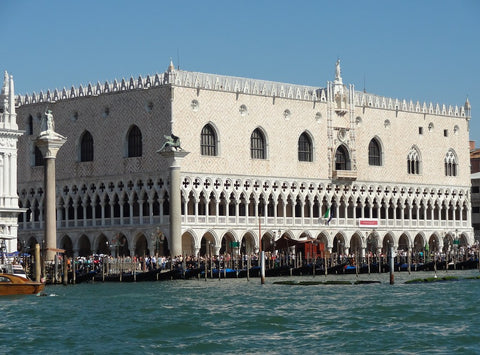
Design for Palazzo Ducale, or as famously known as the Doge’s Palace, was created by Filipo Calendario in the 14th century when the need for a grand palace was felt by the hierarchy of that time. The construction of the palace itself has a history of its own. Started in 1301, the now-eastern wing was finished in 1340 facing the Rio di Palazzo. Soon after, Filipo was executed on charges of treason and its construction halted. The now-western wing was built in its ‘second phase’ and got finished in 1450 which faces the Piazetta San Marco. The palace architectural influence is majorly Venetian-Gothic with Byzantine influences. The interiors of the palace are adorned with scenes from the Bible with a story to tell us all.
Grand Canal
When you hail a private boat or a water taxi in the city, you will be mesmerized by the beauty surrounding the Grand Canal you are passing by. The first settlement in the city grew around the area of Rialto Bridge built on this canal. By the tenth century, the canal became a center for trade and the oldest houses that you will observe around it, once belonged to the sea merchants. Ca’ da Mosto is the oldest building along the canal built in Venetian-Byzantine style of architecture in the thirteenth-century. The ‘House of Gold’ Ca d’Oro was built in the fifteenth century in the Venetian-Gothic style of architecture.
History made with Venetian inventions
With brilliant minds and limited resources at hand, Venetians found ways to do things differently. In their quest to better their lives, they invented many useful things that we use until now.
Tinted Sunglasses
You will be surprised to know that our immensely loved possession is a gift to Venice. Eyewear was being used in the form of ‘snow goggles’ by the Intuit people in North America. It was made of a variety of materials like wood, straw or bone. But the first tinted spectacles saw the light of the day at the island of Murano in Venice in the 18th century. It was a result of long sunny summers and intense light created out of multiple reflections made by waters. They came to be known as Goldoni glasses by the name of Carlo Goldoni who popularized them.
Newspaper
The oldest form of news blogs we all read dates back to the sixteenth century. Weekly hand-written news sheets filled with Italian and European war news were circulated widely in Venice. They were then called Gazette by the Venetians.
Opera House
Venice built the first Opera house ‘Teatro San Cassiano’ that was not exclusively reserved for the nobles. It was opened in 1637 for the paying public and the first commercially run opera was L'Andromeda. The city became the opera capital of the world with the opening of ten other opera houses by the end of the 17th century. Unfortunately, the building was demolished in 1812 due to several recurring fire mishaps.
The all-new and modern Venice
A place which was once difficult to inhabit because of the marshland has now become a famous tourism hub for all of us to admire. Venice has now left behind the days of struggle surviving Napoleon, World War 1, Allied attack on German naval operations, and World War 2. Centuries of self-discipline and intellect of Venetians miraculously created a free republic of unequaled prosperity. The city made with originally only 1,50,000 people is now a global hub welcoming all to be a part of its history for all of us and the coming generations to witness.
